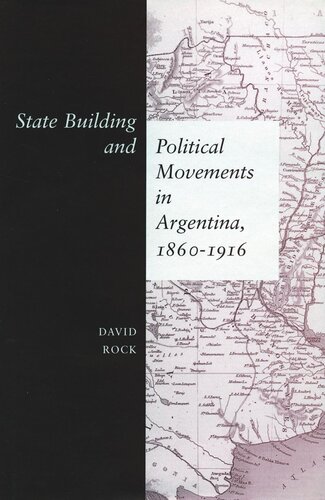

Most ebook files are in PDF format, so you can easily read them using various software such as Foxit Reader or directly on the Google Chrome browser.
Some ebook files are released by publishers in other formats such as .awz, .mobi, .epub, .fb2, etc. You may need to install specific software to read these formats on mobile/PC, such as Calibre.
Please read the tutorial at this link: https://ebookbell.com/faq
We offer FREE conversion to the popular formats you request; however, this may take some time. Therefore, right after payment, please email us, and we will try to provide the service as quickly as possible.
For some exceptional file formats or broken links (if any), please refrain from opening any disputes. Instead, email us first, and we will try to assist within a maximum of 6 hours.
EbookBell Team

4.8
94 reviewsIn the late nineteenth and early twentieth centuries, under the political system known as the oligarchy, Argentina evolved from a dictator-dominated backwater to the leading nation in Latin America. This book examines the formation of a formidable nation-state by studying three political movements: Mitrismo, led by Bartolomé Mitre; Roquismo, under General Julio A. Roca, which ruled the country from the 1860s to 1910; and Radicalismo, a political movement headed by Leandro N. Alem and Hipólito Irogoyen that sought to replace the oligarchy with a more democratic system. The book focuses on the methods these three political movements employed to attract allies in the rural provinces in order to create a national political coalition. Mitre enjoyed only a brief period of national dominance in the 1860s, his chief weakness being a narrow power base centered in Buenos Aires, which he was unable to extend. Roca began his career outside Buenos Aires in Córdoba, and came to power through a combination of military victories and the cultivation of local political support. In many respects, Radicalismo later succeeded by copying Roca's techniques of winning the support of provincial governors and local justices of the peace. Through its overarching themes of consolidation and coalition building, the book addresses several significant issues in Argentine politics during the period, such as the fate of the Federalists and the regional warlords, whom Mitre and his successors attempted to destroy but who were absorbed by Roca into his movement. It also studies the complex internal politics of Buenos Aires, including the formation of the Autonomist Party and the rebellions of 1880 and 1890.